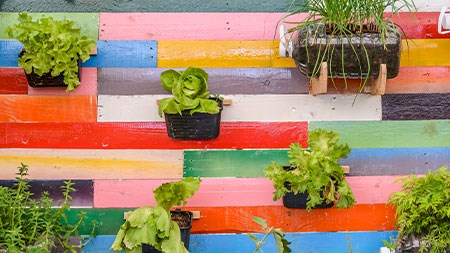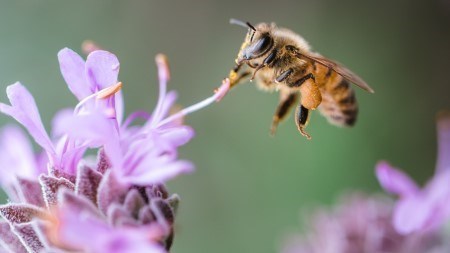With gardens getting smaller and smaller, it’s important to choose trees that won’t outgrow your space.
In the old days, it was all so easy: if you wanted to plant a tree, you planted a tree. No need to worry about whether it’d outgrow its space in a few years' time. Sigh. How things have changed.
These days, it’s all small houses on small stands, sometimes with only a few square metres in which to work.
This is why it’s worth spending some time learning and reading about the different species - and choosing with care because trees form the backbones of most gardens (although they’re also potentially the most troublesome in terms of blocking drains, lifting foundations, and cracking paving!).
The right tree, though, planted in the right place, is bound to reward you forever. It’ll give shade in summer, and it’ll mark the changing of the seasons with its flowers, its autumn colours, and its fruit.
Should you plant evergreen or deciduous trees?
Beware! Here be traps!
Many people think they should plant only evergreen trees because “they don’t mess.” But here’s the thing: evergreen trees are more messy than deciduous trees because they lose their leaves throughout year, while deciduous trees shed only in autumn. So rather choose the right tree for the right place (remembering that deciduous trees let the light in in winter...).
The choice between indigenous and exotic trees, on the other hand, is much easier: as a rule, you shouldn’t go for the exotic. Rather choose a tree that grows naturally in your area: it’ll be most likely to need the least amount of water, to be the most disease resistant, and to be the most attractive to a variety of birds and insects that always bring your garden to life.
What species of trees should you plant?
South Africa has almost a thousand species of indigenous trees (although only a small number of them will occur naturally in your area) - so it’s best to consult your nurseryman or a good book or two before you decide. But here’s a list of top performers that’ll grow happily in most parts of the country (and which you can grow in the open ground, or in pots if space is a real issue):
Cheesewood (Pittosporum viridiflorum) - evergreen, a medium-paced grower, with lovely yellowish flowers and fruit. Cheesewoods are fairly drought hardy, and do withstand light frost. (Beware, though: make sure you’re buying Pittosporum viridiflorum - because its Australian cousin, Pittosporum undulatum, is listed as a Category 1 Invasive Plant. And you don’t want to be responsible for destroying the natural landscape now, do you?)
False olive (Buddleja saligna) - a fast grower that produces wonderful trusses of cream-coloured flowers. But beware: fast growth means weak branches, so keep them pruned (they like that: they like it so much, in fact, that the false olive is excellent as a hedge plant). Although they do get bigger elsewhere, false olives usually reach a height of about 5 metres on the Highveld.
Lavender tree (Heteropyxis natalensis) - pale of bark, and elegant of shape, this semi-deciduous tree deserves a bigger fan base. It’s a little large for the smallest garden, though: it can reach 10 metres in height. But it’s a slow grower, so it might do. It tolerates frost, so it’s a good choice for the Highveld.
Parsley tree (Heteromorpha arborescens) - small or medium-sized tree with distinctive smooth, papery bark that peels off in horizontal bands. The flowers are visually quite insignificant - but they give off a heavenly fragrance when they appear in mid-summer.
Pompom tree (Dais cotinifolia) - possibly the best tree for small gardens. Ever. Anywhere. A compact grower to 6 metres, with a classic, rounded crown, it bears masses of showy, pink flowers in mid-summer. It’s got a light root system, and its leaves are small and easily gathered when they fall.
River indigo(Indigofera jacunda) - a good choice for the very smallest gardens, River indigo rarely reaches more than 4 metres in height. Like the tree wisteria, it often grows as a multi-stemmed shrub, but you can easily prune it if you prefer a single stem. The sweetly-scented, pink and white flowers are borne in mid- to late summer.
Tree wisteria (Bolusanthus speciosus) - this is a real stunner. It’s a medium-paced grower, it’s deciduous, and it bears masses of mauve-to-blue, pea-shaped flowers in spring and early summer. It usually grows as a multi-stemmed shrub, but it takes to pruning well, so it’s easily shaped into a single-stemmed tree if that’s your fancy.
Wild pear (Dombeya rotundifolia) - this deciduous beauty bears massive trusses of white or creamy-coloured flowers in spring. And - bonus! - it’s known for having a non-invasive root system.
For a great resource of information about South Africa’s indigenous plants, please visit the www.plantzafrica.com - an initiative of the South African National Biodiversity Institute (SANBI).



